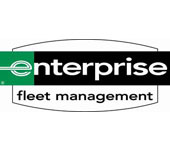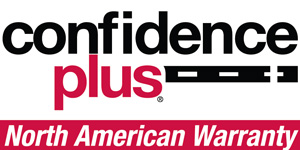Business Hours
- Monday - Friday
- BASHFORD AVE
7:30 AM - 4:30 PM
Phone: (502) 203-0454 - PRESTON HWY
7:00 AM - 4:00 PM
Phone: (502) 230-4279
AMERICAN BRAKE CENTERS INC.
(502) 203-0454 for Bashford Ave or (502) 230-4279 for the Preston Hwy location | 3435 Bashford Ave Ct Louisville, KY 40218
AUTONET TV
Archive for November 2024Timing is Everything (Timing Cover Replacement)Posted November 24, 2024 3:16 AMThere’s an important part in your vehicle that shields your timing belt, timing chain or cam belt from the debris and gunk that can be kicked up from the road. It’s called the timing cover. It’s important because the timing belt or chain is what coordinates parts of your engine called the camshafts and crankshaft. When they’re in sync, all runs smoothly. When they’re not, it can cause some serious engine problems. If your vehicle has a timing belt, without the protection of the timing cover, that belt can come loose from the timing gears or break. If your vehicle has a timing chain, the cover keeps engine oil circulating around it which lubricates it. When that starts to leak because of a bad gasket, the chain may not be getting adequate lubrication. If your vehicle has a timing cover problem, you may notice engine oil leaking if a gasket is not sealing tightly. You may hear a strange metallic sound coming from the engine. Another sign that timing is off is that you notice you’re losing power when you’re going up a hill. Usually, the timing cover will not wear out. But if you drive on roads where you’re getting a lot of debris and dirt kicked up into your engine compartment, the timing cover can get damaged and affect your vehicle’s operation. It eventually could lead to engine problems, so if you notice any of the symptoms mentioned, have one of our technicians inspect your timing cover and gasket. American Brake Centers Inc. The Red Menace (How to Deal with Rust)Posted November 17, 2024 3:17 AMRust. It's worse if you drive in places that use salt on the roads in winter, or if you spend time driving near a body of salt water. But any vehicle has to deal with rust after years on the road. And it's not just that rust can eat away your vehicle's body and fenders. It can be a real problem around your suspension, drivetrain or any place where there's metal. Rust takes its time. You don't see it until it's already done its dirty work. It can wreak havoc with your electrical system. Sure, vehicle manufacturers do their best to keep it to a minimum, but especially with road treatments like brine around, their task is a difficult one. The one spot everyone notices is in the paint. You see a little bubbling under the once-smooth surface. By the time it bubbles, it's well involved in rotting away that spot of your vehicle. You wouldn't believe how just a little thing can start the process on its way. A stone chips the paint down to the metal, moisture and salt reach the steel and rust is off and running. It could be a scratch in the paint, a little dent, acid from a parking garage, tree sap, you name it. If you spot it, show it to your service advisor because rust can be more than a cosmetic problem. It can be a safety issue. While you can see the rust destroy your vehicle's body, you can't see it destroying your engine. But it can. It can eat away at such areas as air intakes or the exhaust system. Not only can it reduce performance, but also it can disable electrical connections. In this day and age where just about everything in your vehicle has a computer component to it, just a small electrical problem can strand you at the roadside. Corrosion can attack your vehicle's chassis or frame, and they are what provide the structural strength and stability for everything attached. Think powertrain, suspension, axles, window frames. The list goes on and on. Structural integrity is vital to safety, so the stakes are high. Now you can see why rust damages more than just the good looks of your vehicle. There's one thing to remember about corrosion - much of it is only visible from underneath the vehicle. When you bring your vehicle in to American Brake Centers Inc. for service, our technician can look for any problems from that important vantage point. It's always a good idea to point out any spots that you think might spell trouble. That way you can stay ahead of it and beat rust at its own game.
Steering You Right (Tie Rod End Replacement)Posted November 10, 2024 3:15 AMFor drivers, S stands for safety. And there are three other words that start with S that are all equally important: starting, stopping and steering. For your vehicle to be at its safest, all three functions must be in top shape. Steering is one of those things we take for granted. After all, you turn the wheel and your vehicle changes direction. But sometimes you might notice your steering is a little off. Maybe you've noticed you turn your wheel slightly and your vehicle doesn't turn. You may feel a little vibration in the wheel that increases when you go faster. You may hear a little squeak from the wheels when you steer and you may notice your tires aren't wearing evenly. These are signs that your tie rod ends may be failing. Tie rod ends help connect your vehicle's steering mechanism to the wheels. They can wear out after you've hit one too many potholes or just from constant use. They can cause sloppy steering and loose handling, and they should be replaced when they've reached the end of their life span. If you notice any of these things happening on your vehicle, bring it in to us so a technician can check it out. There are a couple of different types of steering, recirculating ball steering and the one most of the latest vehicles have, rack and pinion. When we replace your tie rod ends, we will remove and replace the old ones and adjust them to meet your vehicle manufacturer's specifications. Tie rod ends should often be replaced in pairs, and your vehicle should be aligned afterwards. Keep your steering working the way it's supposed to, and your vehicle will be sure to steer you right. American Brake Centers Inc. Command Performance (Engine Air Filter)Posted November 3, 2024 3:18 AMThe internal combustion engine in your vehicle counts on two things that mix together to be burned in the engine for power: fuel and air. Both are important, of course. If you run out of fuel, your engine won’t run at all. Since there’s plenty of air around, you won’t run out of air, but you could feel your vehicle’s performance suffer if the engine air filter starts to get clogged. It's important that the air that enters your engine be free of dirt, dust, and debris to prevent damage to internal components. That’s where the engine air filter comes in. It prevents those particles from entering the engine, an important job that most people just take for granted. After a while, your air filter will get dirty, which results in less air reaching the engine. Modern fuel injected engines can adjust the amount of gas to mix with the air that is getting in, so your fuel economy won’t change significantly. What will change is how well the engine performs, its acceleration. In one test, a US Department of Energy study showed that a dirty air filter reduced a vehicle’s get-up-and-go by as much as 11 percent. The company that made your vehicle includes guidelines in your owner’s manual on how frequently that filter should be changed, and doing so will maintain your engine’s performance. If you drive in dusty, dirty areas or those with a lot of industrial pollution, we recommend you replace the engine air filter more frequently than the manufacturer’s recommendations. When you bring your vehicle to us for regular maintenance, we will routinely check several components, including your engine air filter, and recommend a change when we see signs it’s needed. It’s good for your engine, and you’ll enjoy the performance you expect. American Brake Centers Inc. | ||
SearchArchiveJune 2019 (18)July 2019 (4) August 2019 (4) September 2019 (5) October 2019 (4) November 2019 (4) December 2019 (5) January 2020 (5) February 2020 (4) March 2020 (5) April 2020 (4) May 2020 (5) June 2020 (4) July 2020 (4) August 2020 (5) September 2020 (4) October 2020 (4) November 2020 (5) December 2020 (4) January 2021 (6) February 2021 (4) March 2021 (4) April 2021 (4) May 2021 (5) June 2021 (4) July 2021 (4) August 2021 (5) September 2021 (4) October 2021 (5) November 2021 (4) December 2021 (4) January 2022 (6) February 2022 (4) March 2022 (4) April 2022 (4) May 2022 (5) June 2022 (4) July 2022 (5) August 2022 (4) September 2022 (4) October 2022 (5) November 2022 (4) December 2022 (4) January 2023 (5) February 2023 (4) March 2023 (4) April 2023 (5) May 2023 (4) June 2023 (4) July 2023 (5) August 2023 (4) September 2023 (4) October 2023 (5) November 2023 (4) December 2023 (5) January 2024 (5) February 2024 (4) March 2024 (5) April 2024 (4) May 2024 (4) June 2024 (5) July 2024 (4) August 2024 (4) September 2024 (5) October 2024 (4) November 2024 (4) December 2024 (5) January 2025 (4) February 2025 (4) March 2025 (5) | CategoriesWhat Customers Should Know (41)Fuel Economy (6)Tires and Wheels (1)Timing Belt (3)Fluids (3)Maintenance (7)Service Intervals (1)Alignment (4)Check Engine Light (4)Steering (4)Exhaust (5)Shocks & Struts (1)Air Conditioning (4)Brakes (10)Older Vehicles (1)Cooling System (3)Battery (3)Water Pump (1)Oil Change (5)Transmission (2)Tires (2)Customer Detective Work (1)Fuel Saving Tip: Slow Down (1)Fuel System (1)Auto Safety (3)Keys to a long lasting vehicle (2)Windshield Wipers (2)Alternator (2)Automotive News (1)TPMS (1)Headlamps (2)Service Standards (2)Cabin Air Filter (1)Fuel Pump (1)Winter Prep (2)Safety (2)Shocks and Struts (1)Drive Train (2)Inspection (3)Engine Air Filter (1)Dashboard (1)Spark Plugs (1) | |











